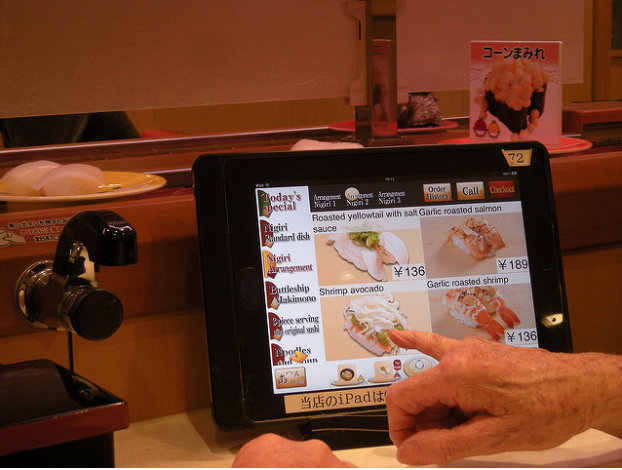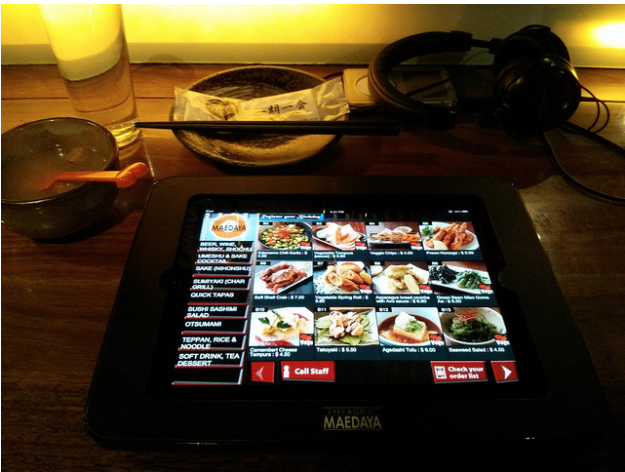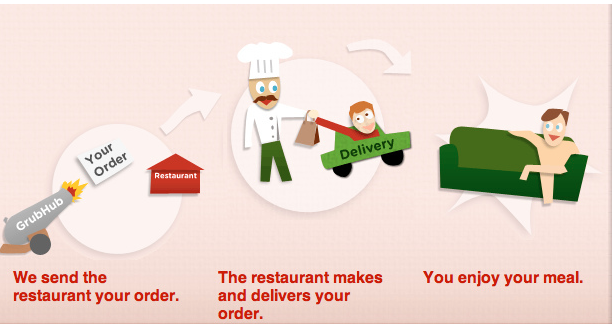 (Source: Flickr)
(Source: Flickr)
We’re living in an increasingly tech-driven society. But the technology isn’t just limited to scrolling through your smartphone for instant information, cool Instagram pictures, or connection with friends; it’s affecting every aspect of our lives, including how we eat.
Technology-driven automation in restaurants is becoming more and more commonplace. Whether it’s a self-order kiosk, an online home delivery app, or the option to text in an order for pickup, there are many different emerging ways in which technology is being used to improve the customer experience, streamline operations, and augment a restaurant’s bottom line and improve sales.
Here, we’ll discuss just a few ways in which your restaurant can consider adding automation to your restaurant, including how they can help improve business.
Order ahead by text. For takeaway restaurants, casual eateries, and coffee shops, ordering via text is a service which has gained a lot of traction in recent years. Basically, the idea is that you text a specific number with your order, sometimes paying in advance, or sometimes paying when you arrive for pickup.
Often, there is a special line for advance order pick-ups, thus making the process much quicker for customers on the run. This streamlined process appeals to commuters, or just people who hate waiting on line, and since the customer submits their own order, it can reduce the possibility of an employee transcribing their request incorrectly.
 (Source: Flickr)
(Source: Flickr)
Self-ordering centers. Casual eateries, coffee shops, and busy, fast moving restaurant locations (such as in airports) are seeing huge benefits by moving toward a model where customers order either in kiosks or on tableside computer or iPad units. The idea is that by allowing customers to order for themselves, it allows for easy personalization of their order, it improves the accuracy of how the food is delivered, and can make overall labor costs lower.
Having a unit also allows the restaurant to engage the customer in other ways, such as asking if they would like to join a mailing list or a loyalty club, or promoting the restaurant’s social media channels.
 (Source: Flickr)
(Source: Flickr)
Join a delivery service. Restaurant delivery conglomerates such as GrubHub are gaining momentum as one-stop shopping for people to order food online. This is beneficial to a restaurant in many ways. For one, allows customers to search for eateries geographically, so it may introduce new people to your cuisine just by searching by location.
For another, the ordering platform allows for customization and special orders, which the customer can detail and write out on their order for the restaurant. This helps avoid the confusion or possibility of an employee transcribing it wrong during a rushed phone order. While the “middleman” takes a fee, the greater volume of orders certainly makes up for it.
Specials display board. A computerized screen or display, mounted in a lobby area or by the payment counter, can help you promote your restaurant and promote sales. How so? In a few ways.
For one, you can display your specials on the board, which can be updated automatically as you sell out or add new items to your menu. It can also be used to promote short-term specials such as happy hour deals. You can also feature delicious-looking pictures of different dishes, which can help sell dishes or inspire customers to try out that specialty appetizer. You can also use the board as a mini billboard, promoting your social media channels or any upcoming events!
Point-of-sale systems. You’ve probably noticed how many restaurants have moved toward having iPad at their counter rather than a big computer unit or cash register. iPad point of sales systems can help automate your restaurant in a number of ways.
For one, having a point of sale system helps orders go right to the kitchen, transmitted digitally. While the time saved per interaction may be small, over time, it can add up in a big way. Second, the point of sale display allows for easier inventory management (which can ultimately keep food costs down) and tracking of what dishes are proving to be the most popular. Third, particularly when accepting payment at an iPad point of sale system, it allows for customers to see suggested tip amounts right as they pay, which can help gently guide them toward leaving a better tip.
Automated checkout. Waiting for the bill is undoubtedly one of the most frustrating parts of being a diner at a restaurant. For a server, it can be a tough call: is that group impatiently waiting for the check, or would they like to linger over coffee and dessert undisturbed for a few more minutes?
However, with an automated checkout system, which can be available either via kiosk or via tabletop displays, you can allow customers to check out when they want and how they want. This can help avoid an awkward dynamic between server and customers, and allows customers to settle up and pay as they are ready. This small service can be the difference between a frustrated customer and one who is excited to make a return trip to your restaurant.
 (Source: Flickr)
(Source: Flickr)
Automated food delivery. Automation is even affecting the way that food is delivered. In Los Angeles, a cupcake shop debuted a “cupcake ATM” that just about broke the internet with its popularity; elsewhere, sushi is delivered by conveyor belt as if it is riding a toy train, and there’s even a growing trend in dining wherein restaurants offer a (nearly) completely automated dining experience.
Creative modes of food delivery like this can help not only in reducing labor costs, but they also offer a powerful marketing opportunity for your business. It provides an interesting, novel experience, and is a great way to engage customers in a slightly untraditional way.
Electronic payroll. Automation can also help streamline how you pay your employees, too. Many restaurants have moved to an electronic payroll model, paying employees online, or using direct deposit. It saves checks, it saves time, and ultimately, it saves money, and is easier to track in accounting programs. Consider automating your payroll electronically; once you’ve created a great system, it will free up a lot of time for you or whoever handles your restaurant’s outgoing finances.
Conclusion: Automation through technology is quickly becoming part of the future of the restaurant industry. Whether it’s as simple as installing a point of sale iPad unit or as comprehensive as completely automating your ordering and food delivery, there’s some level of automation that can benefit just about any type of establishment. Consider the modes of automation discussed in this post as “food for thought”, and inspiration for how your restaurant can move forward boldly and profitably into the technology-driven future.
How could your restaurant incorporate automation into everyday operations?


